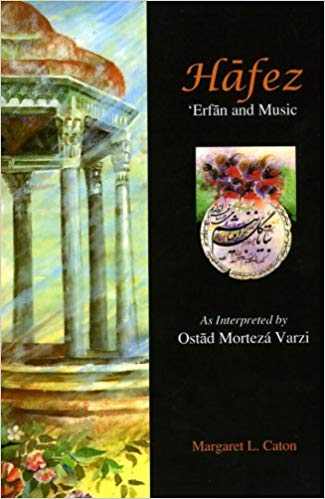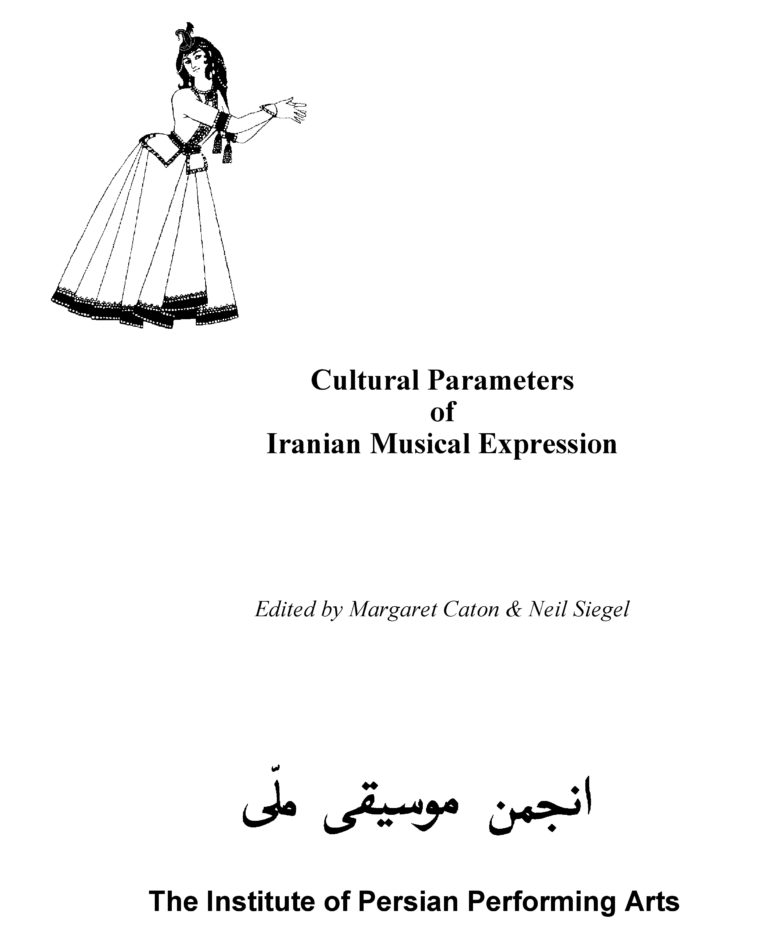Publications include:
“Hafez: Erfan and Music”, by Margaret L. Caton and Ostad Morteza Varzi
“Cultural Parameters of Iranian Musical Expression“, edited by Margaret L. Caton and Neil Siegel
The Institute of Persian Performing Arts is a non-profit, tax-exempt corporation.
Other papers by Institute-affiliated scholar Margaret Caton:
“Bahá’í influences on Mírzá ‘Abdu’lláh, Qájár Court Musician and Master of the Radíf“, a chapter in the book “Studies in Bábí and Bahá’í History, edited by Juan Cole and Moojan Momen, Kalimat Press, 1984.
“Gender Relations: A Cross-Cultural Dilemma“, a chapter in the book “Equal Circles: Men and Women in the Bahá’í Community”, edited by Margaret Caton, Kalimat Press, 1987
“The Classical Taṣnif, a Genre of Persian Vocal Music“, 1983
“The Vocal Ornament Takīyah in Persian Music“, an article in “Selected Reports in Ethnomusicology”, editor-in-chief: Mantle Hood, volume II, number 1, 1974.
“The Kereshme“. Class paper written for Johannes Wilbert’s Anthropology 139 Course, UCLA, Winter, 1989. Raw notes from Dr. Caton’s interviews with Mortezâ Varzi, used for this paper.
“The Process of Transformation within Iranian Traditional Music“. With Morteza Varzi. Annual Conference, Southern California Chapter, Society for Ethnomusicology, 12 May 1990.
“The Musical Culture of Gilan“, unpublished class paper, 1974.
(click here to view photos taken by the author in Gilan)
“Musical Life in Qajar Iran“, a paper presented at the 14th Annual Meeting of the Middle East Studies Association, 1980.
“Classical and Political Symbolism in the Tasnifs of ‘Aref-e Qazvini“, not previously published.
“Aspects of Sufism as they Relate to Persian Music“, not previously published.
“Music and Tasnif During the Iranian Constitutional Revolution“, not previously published.
“Interview with Morteza Varzi about the life and work of the singer Gholamhoseyn Banân“, 1986. This article is the version submitted by Dr. Caton to the editors of the Encylopædia Iranica for their entry on the singer Banân. The article was subsequently revised and expanded by the editors for the final publication, which is here. In addition, we present three audio tapes of the original interview Dr. Caton conducted with Mr. Varzi, which includes material not presented in the article.
In addition, we present 3 audio tapes of the original interviews that Dr. Caton did with Mr. Varzi:



